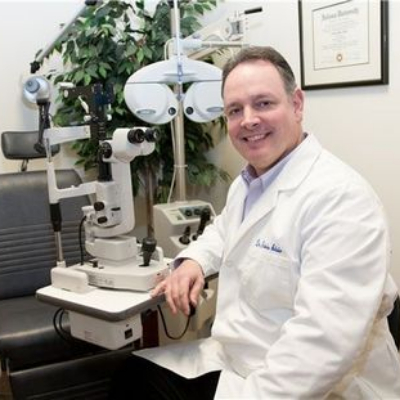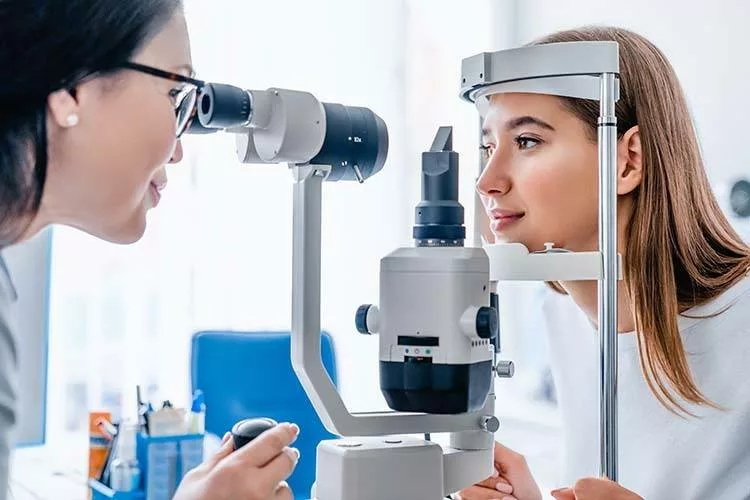Discovering the Latest Technological Advancements in Optometry and What They Mean for Eye Doctors
From the precision of Optical Comprehensibility Tomography to the nuanced insights supplied by AI-driven analysis tools, these advancements are establishing new criteria in patient evaluation and treatment. As these improvements penetrate the practice, optometrists are encountered with the challenge of embracing these devices to boost individual end results.
Developments in Diagnostic Equipment
Advancing the area of optometry, technologies in analysis devices have actually revolutionized the method eye treatment specialists evaluate and diagnose aesthetic disabilities and eye conditions. The past decade has seen substantial technical developments, allowing more accurate and detailed examinations.
One more key innovation is the intro of sophisticated corneal topography systems, which map the surface area curvature of the cornea with precision. These devices are specifically advantageous for suitable call lenses and identifying corneal disorders. Electronic retinal imaging has transformed standard ophthalmoscopy, providing thorough, scenic sights of the retina that assist in extensive visual exams.
The development of wavefront aberrometry has also been crucial, making it possible for the analysis of refractive errors with unmatched precision (Optometrist Chino). This innovation assists in personalizing restorative lenses and improving medical results for refractive surgical treatments. Jointly, these analysis innovations encourage optometrists to provide remarkable patient treatment, making sure very early intervention and tailored treatment approaches, eventually improving visual health and wellness outcomes
AI in Individual Monitoring
Structure on the structure of cutting-edge analysis tools, the unification of fabricated knowledge (AI) in person administration represents a transformative leap for optometry. AI systems are increasingly used to improve performance, accuracy, and customization in client treatment.
Furthermore, AI-driven systems facilitate structured individual communications and management processes. Automated organizing, virtual examinations, and personalized follow-up plans not just boost individual satisfaction yet additionally maximize time monitoring for specialists. These systems can triage individuals based upon the urgency of their conditions, making certain that those in important need get punctual focus.
In addition, AI boosts decision-making by supplying optometrists with evidence-based referrals and therapy pathways. By integrating information from digital wellness records, AI devices use understandings that educate medical decisions, minimizing the danger of errors and enhancing patient results. As AI proceeds to develop, its role in individual monitoring will likely increase, improving the landscape of optometric care.
Advancements in Retinal Imaging
In the realm of optometry, retinal imaging has witnessed remarkable technological improvements that are enhancing diagnostic abilities and person treatment. Advancements such as Optical Coherence Tomography (OCT) and fundus photography have actually changed just how optometrists assess the retina and picture. OCT, particularly, supplies high-resolution, cross-sectional pictures of the retina, allowing for the thorough assessment of its layers. This ability is important for very early detection and administration of conditions like glaucoma, diabetic retinopathy, and age-related macular degeneration.
Boosted imaging modalities like OCT angiography are further refining analysis accuracy. Eye Doctor Optometrist. Such improvements assist in the recognition of min retinal changes that could indicate illness development.
Additionally, improvements in expert system are boosting retinal imaging by making it possible for automated analysis of large datasets. These systems help eye doctors in determining patterns a sign of pathology, thereby improving analysis accuracy and performance. Jointly, these developments are changing retinal imaging into a you can look here cornerstone of modern-day eye care, boosting results and broadening healing opportunities.
Teleoptometry's Growing Duty
Teleoptometry is progressively ending up being an essential part of eye care, driven by developments in data and diagnostic devices. As optometry welcomes electronic makeover, teleoptometry promotes remote assessments, permitting optometrists to prolong their solutions beyond conventional limits. This is particularly useful in underserved and country locations where accessibility to specialized eye treatment is typically minimal. By leveraging high-resolution video conferencing and advanced retinal imaging, eye navigate to this website doctors can perform comprehensive eye tests from afar, making sure prompt medical diagnosis and treatment.
The combination of expert system (AI) additional boosts teleoptometry, making it possible for the analysis of aesthetic information and assisting in the detection of eye problems such as glaucoma and diabetic retinopathy. AI-powered formulas can quickly translate complicated imaging information, providing optometrists with valuable understandings that boost professional decision-making.
Furthermore, teleoptometry sustains continuity of care through seamless integration with digital health and wellness records (EHRs), allowing optometrists to preserve detailed patient backgrounds. When seeking advice from with different specialists., this makes certain that patients obtain constant and customized care also.
In spite of these benefits, challenges remain, consisting of making certain data safety and taking care of patient expectations. However, teleoptometry stands for a significant stride in the direction of more easily accessible, effective, and patient-centered eye treatment. As innovation evolves, its duty is poised to broaden additionally.

Future Patterns in Eye Treatment
A myriad of innovative patterns is readied to improve the future of eye care, driven by technical innovations and the progressing needs of patients. One significant fad is the assimilation of man-made intelligence (AI) in diagnostics, which guarantees to improve the precision and performance of eye assessments. AI formulas can examine substantial quantities of information from retinal photos, potentially finding problems like diabetic retinopathy and glaucoma earlier than traditional approaches.
Moreover, tailored medicine is getting traction in optometry, with genetic testing educating personalized treatment plans. This strategy intends to enhance patient outcomes by tailoring interventions to private genetic accounts. Wearable technology, such as smart get in touch with lenses, is likewise imminent, using real-time surveillance of intraocular pressure or glucose levels, thus giving continual understandings into eye and systemic wellness.
The adoption of enhanced reality (AR) and digital fact (VR) in training and person education is one more arising pattern. These innovations supply immersive experiences that can enhance understanding and abilities both for clients and optometrists. As these trends progress, eye doctors must stay abreast of technological improvements to provide cutting-edge treatment, making certain enhanced patient end results and satisfaction in the vibrant landscape of eye treatment.
Conclusion

Collectively, these analysis developments encourage optometrists to deliver superior individual treatment, ensuring very early treatment and tailored treatment methods, inevitably boosting aesthetic wellness end results.

As these technologies proceed to develop, eye doctors must adjust and integrate them right into method, ultimately maximizing process effectiveness and boosting the standard of eye care supplied to patients.